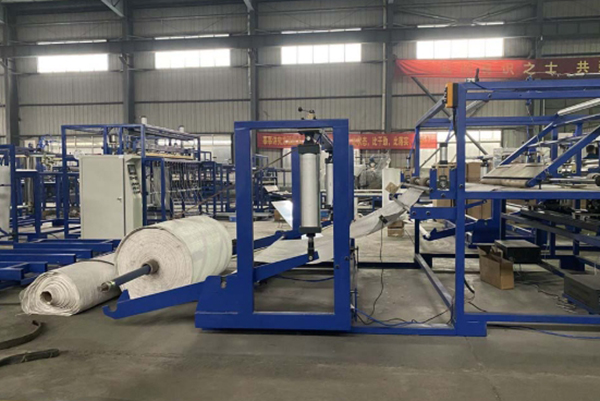In the world of industrial packaging, FIBC (Flexible Intermediate Bulk Containers) play a vital role in transporting and storing bulk materials such as grains, powders, chemicals, and construction materials. As demand for these large-scale containers continues to grow, so does the need for specialized machinery that ensures their production is efficient, consistent, and cost-effective. One such essential piece of equipment is the Cross FIBC Fabric Cutter.
This article explores what a Cross FIBC Fabric Cutter is, how it works, its benefits, and its significance in the FIBC manufacturing process.
What Is a Cross FIBC Fabric Cutter?
A Cross FIBC Fabric Cutter is a cutting machine designed to slice woven polypropylene (PP) fabric used in the production of FIBCs or bulk bags. These machines are engineered to cut fabric accurately and efficiently, either across the width (crosswise) or in predefined shapes and sizes.
Unlike manual cutting methods, which can be time-consuming and error-prone, the Cross Cutter automates the process, ensuring uniform dimensions and precise alignment of fabric panels, which is critical to the structural integrity of FIBCs.

How Does It Work?
Most Cross FIBC Fabric Cutters consist of a few key components:
-
Fabric Feed System: Rolls of PP fabric are loaded into the machine. A motorized feeding system unwinds and feeds the fabric into the cutting area.
-
Measuring and Tension Control: Sensors and tension control mechanisms ensure the fabric remains flat and correctly aligned, minimizing wrinkles or skewing during the cut.
-
Cutting Unit: The core of the machine uses hot knife or cold blade technology. A hot knife cutter seals the edges as it cuts, preventing fraying—ideal for synthetic materials like polypropylene.
-
Control Panel: Operators can program the machine to cut fabric to specific lengths, widths, or patterns. Advanced systems may feature touchscreens, programmable logic controllers (PLCs), or integration with factory automation systems.
-
Stacking and Collection: Once cut, the fabric panels are stacked neatly or moved to the next production stage automatically.
Applications in FIBC Manufacturing
FIBCs are typically constructed from several fabric panels, including:
-
Body panels
-
Base panels
-
Top skirts or spouts
-
Side reinforcement panels
Each component must be cut to exact specifications to ensure the bag can hold several hundred to thousands of kilograms of material without failure. The Cross FIBC Fabric Cutter ensures that these cuts are made accurately and consistently, improving overall bag quality and safety.
Advantages of Using a Cross FIBC Fabric Cutter
-
High Precision and Consistency
Manual cutting can lead to variations that compromise the fit and strength of the final product. Automated cutting ensures every piece is the same, reducing waste and enhancing product reliability. -
Increased Efficiency
Machines can process hundreds of meters of fabric per hour, significantly speeding up production and lowering labor costs. -
Safety Improvements
Automation reduces the need for workers to handle sharp blades or hot surfaces, making the factory floor safer. -
Versatility
Modern cutters can handle a range of fabric weights and thicknesses, and some models offer options for both hot and cold cutting, making them adaptable to different manufacturing needs. -
Waste Reduction
Precise cuts mean less fabric is wasted, which not only lowers material costs but also supports sustainable manufacturing practices.
Conclusion
The Cross FIBC Fabric Cutter is an indispensable tool in the bulk bag manufacturing industry. It combines speed, accuracy, and automation to deliver high-quality fabric cuts essential for creating strong, reliable FIBCs. As the demand for bulk storage and transport solutions continues to grow globally, investing in advanced machinery like a cross fabric cutter is not just a smart operational choice—it’s a competitive necessity. For manufacturers looking to improve production output and product consistency, this tool represents both innovation and efficiency.
Post time: Jun-26-2025

